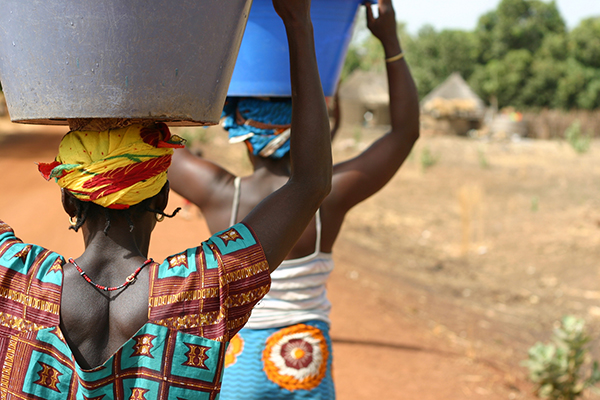Read more about Special Columns
Youth Participation at the United Nations
by Jovanni Rodriguez
February 15, 2013
Eryn Snyder received the 2012 Rachel Tanur Memorial Prize for Visual Sociology. The Prize is awarded biennially by the Social Science Research Council with grants from the Mark Family Fund. Members of ISA’s Visual Sociology Thematic Group (TG05) are serving as the Prize Jury, and TG05 has been hosting the award ceremony at ISA meetings since 2008. Further information on the Rachel Tanur Memorial Prize can be found at https://www.racheltanurmemorialprize.org/.
Four to six times a day, Bedik women of Southeastern Senegal haul water from a nearby well back to their community. Their feet have cut trails into the red earth and worn smooth the rocks along the paths up to their mountain villages. On one torrid afternoon in the village of Indar, a few women invited me along to take photographs. Moving between them as they walked and chatted leisurely, I snapped this shot of Denise and Marie. The image was taken as part of a larger ethnographic project on cultural tourism in Bedik villages. Collaborative photography was used to explore how the Bedik wish to represent their culture to tourists and how they visualize Bedik identity. Villagers advised me to take pictures of Bedik women with traditional clothing and hairstyles, performing traditional tasks. Therefore, I was not surprised that this photograph of Denise and Marie was a favorite among the Bedik. Still, I was intrigued when villagers adamantly professed that these women are “le vrai Bedik” – the real Bedik.
This image sustains the perception, however illusory, that Bedik villages have remained uncorrupted by forces of globalization. Furthermore, the photograph echoes the fetishization of female labor, in which the motif of the female water-bearer has become indexical of African authenticity. In calling Denise and Marie the “vrai Bedik,” the Bedik are also defining their authenticity in terms consistent with their cultural heritage, wherein women are respected possessors of cultural knowledge. The repeated posturing of their bodies with their backs to the camera creates a certain anonymity; they represent the strength of all Bedik women and, by extension, the endurance of Bedik culture. The image reveals that, while Bedik women shoulder the weight of gendered authenticity, they do so with agency and prowess.
Eryn Snyder, Temple University, USA
This issue is not available yet in this language.
Request to be notified when the issue is available in your language.
If you prefer, you can access previous issues available in your language:














